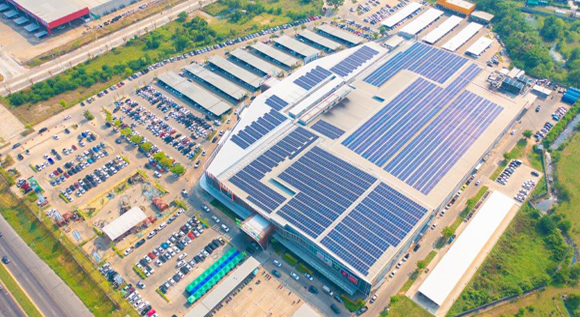Connecting renewable energy installations to the grid is about to become easier
For Germany to be able to cover the majority of its electricity demand though renewables in the near future, new solar installations need to be connected to the grid more quickly. The complex certification procedure has now been simplified – even for large installations.
 © Adobe Stock / tampatra
© Adobe Stock / tampatra
Germany’s new, streamlined certification procedures for solar installations are on now their way following the adoption of a draft ordinance amending the Electrotechnical Properties Verification Ordinance (Elektrotechnische-Eigenschaften-Nachweis-Verordnung, NELEV) which passed through the Federal Cabinet on 13 September. The aim is to make the processes for connecting renewable energy installations to the grid easier, more digital and thus faster.
New focus on renewable energy installations up to 500 kilowatts
A key focus of the new regulations is on renewable energy installations with a capacity of up to 500 kilowatts, as this is where the largest increase in capacity is expected. This will particularly benefit rooftop photovoltaic systems, especially those mounted on commercial properties.
In future, installations with a maximum feed-in of 270 kilowatts and a total installed capacity of up to 500 kilowatts will no longer need to be certified – irrespective of their voltage. They will now pass through a simplified verification procedure based on the unit and component certificates issued by the manufacturer. This procedure previously only applied to installations connected to a public low-voltage grid. As a result of this broadened exemption and changes to the requirements, the burden on operators of large rooftop PV systems, such as systems on supermarkets and factory roofs, is set to be reduced in particular.
Key milestone achieved: digital register created to make grid connection easier
A new digital register for unit and component certificates at all voltage levels has also been created to make it a lot easier for plant operators and grid operators to complete the grid connection process. It will also better ensure compliance with the technical requirements. The internet-based register will help digitise the verification procedure and facilitate market monitoring.
Technical connection rules revised
In order to connect renewable installations to the grid more quickly while still ensuring grid stability and security, the new regulations also provide for a revision of the technical connection rules. These are a nationwide set of rules that ensure that generation and consumption installations can be integrated into the grid securely.
The amendment of the Electrotechnical Properties Verification Ordinance is flanked by the creation of a new ordinance, the Electronic Installations Requirements Ordinance (Elektronische-Anlagen-Anforderungen-Verordnung, EAAV), as well as amendments to the Energy Industry Act. The entire package of measures is scheduled to enter into force at the beginning of 2024.
Further information
- Press release by the Federal Ministry for Economic Affairs and Climate Action: Acceleration of grid connection for renewable energy installations approved by cabinet (German only).
- Legislative procedure: regulatory package to tailor certification procedure for large-scale implementation (German only).

